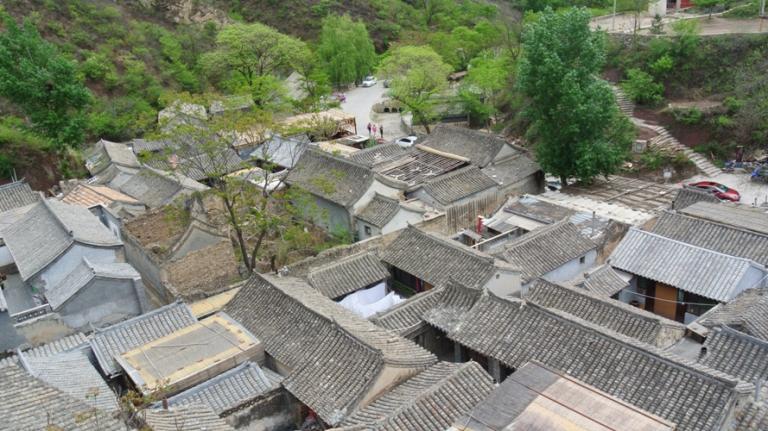Chuandixia Village
3 min readChuandixia: A well-preserved architecturalcomplex dating to the Ming and Qing Dynasties; agraceful melding of traditional courtyard structures andpeaceful mountain landscapes; a place for centuriesunchanged.After hundreds of years of remaining a bucolicbackwater, Chuandixia has resumed its past prosperity.Waves of tourists now visit to explore and consider realmsunknown and a history long past.

Ancient E legance
Among all the ancient villages arrayed acrossthe western suburbs of Beijing, Chuandixia is probablythe best known. Since it was discovered by urbanBeijing artists about 20 years ago, the village has drawnincreasing public attention.
In December 2003, China’sMinistry of Construction and State Administration ofCultural Heritage designated Chuandixia as one of the first of “China’s Famous Historical andCultural Villages.” Departing Beijing cityproper and heading west along NationalHighway 109, after a 90—km drive one arrivesat Chuandixia.This small village is situated along anancient path in the northwest part ofZhaitang Town, Mentougou District.Hidden in a deep mountain valley, the age-old transit way was an important militarypassage linking Beijing With the northernfrontiers during the Ming and Qing periods,as well as a communication thoroughfarebetween Beijing and Hebei, Shanxi, andInner Mongolia.
It is said that the ancestorsof Chuandixia’s current generationalresidents were migrants who relocated fromSbanxi during the reign of Ming EmperorYong Le. During its earliest era ofcommunity, the village was mainlyinhabited by the Han Clan.Well preserved inside the village are70-plus residential compounds, comprisingmore than 500 rooms. The houses, mostlyconstructed of brick and tile, feature aprecise structure, a functional layout, andbeautiful decorations. Visitors to the villagemarvel at the delicate structures, wonderinghow this could be in such an out-of—the-way mountain valley. Legend has it that in ancienttimes, a local villager once acted as substitutemonk of the then emperor and laterestablished an association with the imperialfamily, and the entire village thus benefited.It is also said that to avoid war, wealthymerchants from urban areas relocated to thisplace and constructed their new homes.

Some people also believe that in the early Qingperiod, to show their allegiance to the MingDynasty and escape strikes from the newly—founded Qing, former officials of the Mingmoved here and Constructed this Utopianvillage.Siheyuans (residential compounds withcourtyards surrounded by houses on foursides) are commonplace in the city of Beijing.Chuandixia Village, however, is home to thebest-preserved high-range Siheyuan complex.The entire village, constructed on themountainside, is situated in the north andfaces south. Viewed from the top of themountain on the opposite side, the villagelooks like a shoeshaped gold ingot, a designconveying a wish for “gathering money.” Ifviewed from Shanliang Mountain, whereTemple of Guan Yu is located, Chuandixiagreatly resembles a castle.A part of the Taihang Mountain Range The One-Line Skyf and the Qingshui River Valley,Chuandixia Village comprises anarea of 5.33 square kilometers atan altitude of 650 meters.Surrounded by mountains, theplace enjoys a mild monsoonclimate and myriad and lushvegetation.
Within and around thevillage are attractive natural andcultural landscapes, such as One— The complicatedly configured character as part of thevillage’s name, deriving from several characters respec-tively meaning “boom,” “forest, ” “big,” and ‘1‘ire.” Implyingfamily unity and warmth, this character is now viewed as asymbol of this ancient village. the West B eijin g Ancient Path.









